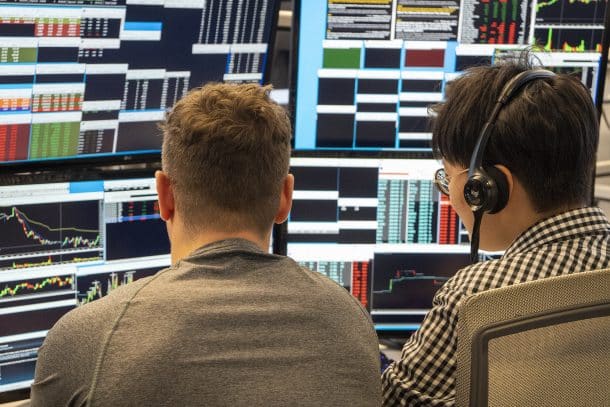When new traders first discover options trading they get excited by the leverage that buying options can provide. One call option contract allows you to control 100 shares of the underlying security. So instead of buying the stock on margin, you can buy an option using a lot less capital. This leverage attracts traders who have limited resources because under the right conditions options can be very, very inexpensive. Two factors that can affect the price of an option include how far out of the money they are and how many days are remaining to expiration.
Less experienced options traders believe they can hit “home runs” buying options because risk is limited while your profit potential is unlimited. As great as this sounds in theory rarely does it work out so perfectly until we gain a little more experience.
What many novice options traders miss are the factors that affect the probability for a profitable trade.
Most astute traders who are skilled in basic technical analysis will buy an out-of-the money call option when they believe that the underlying asset is going to go up. The next day you excitedly pull up a chart and observe that the underlying asset has in fact gone higher exactly as you planned however, instead of making money, the call price went down!
How can this possibly happen? How can you be “right” but lose money?!
There are two reasons that can explain this phenomenon:
1) Time decay and
2) Drops in implied volatility
Let’s talk about each and how they affect the trade:
Time decay is the dissipation of the extrinsic value of the option—all of which is gone by the time the option expires. So the more time until expiration, the more the option will cost to purchase, all other things being equal. Since a lot of new traders don’t want to risk a lot, they typically buy very short term call options or put options within 30 days or fewer until expiration.
That means that every day that passes without the underlying security moving, your option will lose value due to time decay. I think of this as the equivalent of buying a new car. The day after I bought it and drive it around even a little, the car has already begins to lose value. Well, the same goes with options.
Implied Volatility reflects the expectations for movement in the underlying asset and impacts pricing directly. If expectations are for a lot of movement in the underlying say for a pending news announcement for earnings, then volatility goes up, which explains why the price of the options might be higher than normal. Another way of thinking about volatility is simply supply and demand.
Just before an earnings announcement for example, people are making bets as to whether the stock might be going higher and buying calls or buying puts because they either think the stock is going lower, or they want to protect their current holdings. All of this demand causes both call options and put options to go higher in price, all other things being equal.
After the earnings announcement happens all of these options which were purchased for the earnings announcement suddenly are available for sale (thus a spike in supply) so they can close out their positions. When there is greater supply than demand, prices go down and so does volatility (even though the price of the stock might have moved a lot).
Another factor affecting supply and demand relates to the direction of the underlying. When markets go down, option buying generally increases due to hedging. Volatility goes up for both puts and calls as well. When markets go up, there is less hedging and thus less demand, so volatility goes down and prices of both puts and calls go down.
To summarize, you can buy an option ahead of a news event, but if you do, you are probably buying at inflated prices due to a volatility increase. If you buy it way ahead of earnings, or in any event well in advance of expiration for whatever reason, you are then subject to time decay in your option as well.
If you are correct and the underlying goes up, you are still subject to lower demand which equals lower volatility which equals lower prices. So be careful when you buy a call option because you immediately have to overcome two obstacles, time-decay and lower volatility even if the underlying moves in the direction you expected. That’s how you can buy a call, the market moves up and you lose money. Buyers beware.
Seth Freudberg and Michael Schwartz
no relevant positions


One Comment on “Understanding Call Option Dynamics When the Market Rises”
I wish I would’ve ran across this information prior to buying several Jun 14 80 calls for face book’s 2014 1Q earnings. This is exactly what happened to me. Stock price rose to 65 from 60 after earnings and I loss big.